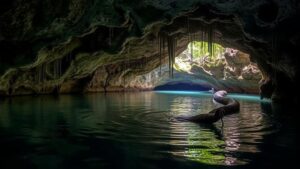Mapping ruins found only during rare tidal recessions along coastal cliffs.
Mapping Ruins Found Only During Rare Tidal Recessions Along Coastal Cliffs
Coastal archaeology is an increasingly important area of study as it links the physical remnants of human activity with the ever-changing landscapes shaped by tides and natural erosion. Among the fascinating challenges faced by researchers is the discovery of ruins that only emerge during rare tidal recessions. This article explores the significance, techniques employed, and notable findings associated with mapping these elusive sites along coastal cliffs.
The Importance of Tidal Recessions in Archaeology
Tidal recessions, which occur during unusually low tides, reveal submerged and coastal landscapes otherwise hidden beneath the ocean. e events can be likened to opening a time capsule that contains artifacts and structures of past civilizations. For example, in 2017, during a particularly low tide near the Isle of Skye in Scotland, archeologists uncovered ancient stone structures believed to date back to the Neolithic period (approximately 4000-2500 BCE). These discoveries can provide invaluable insights into the daily lives and cultures of prehistoric peoples.
Methodologies for Mapping Coastal Ruins
Mapping ruins revealed by rare tidal recessions involves various methodologies, integrating traditional archaeological techniques with modern technology.
- Surveying and Documentation: Before and after the tidal event, archaeologists conduct thorough surveys using GPS technology to document the locations of newly exposed ruins. For example, the Lost City of Heracleion in Egypt was mapped using high-resolution aerial photography, allowing researchers to create detailed records of the site.
- Underwater Drones: Employing underwater drones aids in surveying submerged areas and capturing images of artifacts that might have not been visible from the shore. The use of such technology was instrumental in mapping underwater ruins found off the coast of Mariana Islands, leading to significant discoveries.
- Geographic Information Systems (GIS): GIS technology helps integrate various data points to produce detailed maps that highlight patterns and changes over time. This approach utilized effectively in locations such as the coastal cliffs of California, where researchers are mapping extensive prehistoric marine settlements.
Case Studies of Notable Coastal Ruins
Several key case studies exemplify the importance of mapping ruins revealed during tidal recessions:
- Doggerland: Once a land bridge connecting Great Britain to continental Europe, Doggerland submerged around 6,500 BCE. Recent studies have mapped its remnants using multi-beam sonar, providing insights into Mesolithic hunter-gatherer communities.
- Stone Structures in Wales: During extreme low tides in July 2021, ancient stone formations along the coast of Pembrokeshire surfaced, leading to significant research into their construction techniques and purpose, disrupting previous assumptions about the regions historical habitation.
Challenges and Ethical Considerations
While the mapping of these coastal ruins presents exciting opportunities for research, it also poses challenges and ethical questions:
- Environmental Impact: The exposure of archaeological sites can make them vulnerable to damage from both natural elements and human activity.
- Preservation Concerns: How artifacts are conserved post-discovery raises debates about the best practices in archaeology, balancing the need for public education with the protection of delicate historical sites.
Conclusion: The Future of Coastal Archaeology
Mapping ruins revealed during rare tidal recessions along coastal cliffs represents a dynamic intersection of art, science, and history. The application of advanced technologies alongside traditional methodologies is shaping our understanding of human history and cultural evolution. As climate change continues to influence tidal patterns and coastal erosion, it becomes increasingly urgent to study and preserve these fragile sites before they are lost forever.
In summary, coastal archaeology encourages a view of history that is not static but fluid, constantly shaped by natural processes. Researchers and enthusiasts alike should advocate for continued exploration, respectful preservation, and comprehensive mapping of these historical treasures before they disappear once again beneath the waves.



